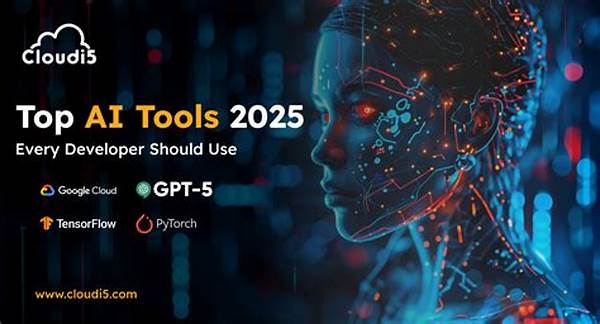In the ever-evolving realm of digital creativity, visual effects (VFX) have always played a pivotal role in transforming imaginative concepts into tangible experiences. As we inch closer to 2025, the VFX industry stands on the brink of a technological revolution driven by artificial intelligence (AI). These top AI tools for visual effects in 2025 promise to redefine boundaries, unleashing possibilities that were once the stuff of dreams. Imagine a world where intricate visual designs are implemented with precision, requiring minimal manual input, and the results are nothing short of magical. This is not a distant vision but a tangible reality waiting to be explored. With AI taking the helm, the VFX industry promises not only to streamline operations but also to provide artists with the freedom to focus on the creative process rather than the technical intricacies.
Read More : Why Ai Filmmaking Tools Are The Next Big Thing
Visual effects have continuously pushed the envelope of what’s possible on screen. With the advent of AI, this journey takes on a new dimension, where machines and human creativity coalesce to create compelling narratives. Whether you’re a seasoned VFX professional, a burgeoning filmmaker, or a tech enthusiast marveling at the blend of creativity and technology, the coming years promise exhilarating developments. In this piece, we delve into the top AI tools for visual effects in 2025, offering insights into how they might reshape the cinematic landscape.
The Game-Changing Impact of AI Tools in VFX
As AI technologies evolve, the shifts it triggers within the visual effects industry are both profound and transformative. The top AI tools for visual effects in 2025 are predicted to carry several key features that promise significant changes in content creation. From AI-driven automation to intelligent scene generation, the anticipated tools not only promise greater efficiency but also bring imaginative stories to life in ways previously unimaginable.
By 2025, we expect AI to handle more complex tasks such as automated rotoscoping, intelligent scene reconstruction, and even AI-led directorial inputs. AI’s integration into the VFX pipeline aims to preserve time and resources without compromising on quality. VFX artists will have unprecedented access to advanced tools that support their creativity, allowing them to focus on storytelling while AI manages the mundane, intricately detailed processes that often take up valuable production time.
Enhancing Creativity with AI-Powered Visual Tools
The crux of AI’s role in visual effects is its capacity to empower creators rather than replace them. AI assists artists by handling repetitive tasks, offering predictive suggestions, and generating intelligent content recommendations. This complementary relationship fuels industry innovation as artists are liberated from time-consuming tasks and can explore more creative avenues. High-end studios and creators working from kitchen tables alike stand to benefit from the democratization of VFX brought about by AI.
In terms of creativity, AI’s predictive capabilities can preemptively offer solutions or suggest alternatives during the creative process. Imagine instantaneously seeing multiple iterations of a scene, or even scripting assistance that reads the mood and era, providing contextually appropriate suggestions. These capabilities underline the notion that in the near future, the frontier of storytelling will be enriched by symbiotic relationships between human intuition and AI efficiency.
Real-World Applications of AI in Visual Effects
As we look towards real-world applications, the entertainment industry is ripe for the revolution spurred by top AI tools for visual effects in 2025. Be it in creating awe-inspiring landscapes, achieving seamless character integration, or even dynamically modifying scenes based on user interaction, AI offers an array of uses. Studios will have the capacity to generate content faster and with greater precision, elevating audience experiences in movies, games, and even virtual reality environments.
With AI’s dynamic learning capacity, projects can adapt to real-time feedback, enhancing interactions and making VFX an integral part of immersive storytelling. The future spells a vibrant canvas for creators, where artistic imagination meets digital prowess through AI tools designed to push storytelling to boundless new horizons.
Key Features of Top AI Tools for VFX in 2025
The Future of VFX with AI
In sum, as AI continues to evolve, its role in visual effects is undeniably significant. The top AI tools for visual effects in 2025 promise to revolutionize how content is created, consumed, and experienced. This transformative potential aligns with the overarching narrative technology has consistently weaved into our lives – one of empowering creators, enhancing user experiences, and constantly redefining what is possible within and beyond the screen.
For VFX artists, filmmakers, and tech enthusiasts, 2025 marks the dawn of a new era. A time where imagination knows no bounds, unshackled by the technical constraints of the past. As AI and human creativity intertwine, it presents an exciting frontier, one marked by breathtaking visuals, compelling narratives, and an expansive palette of creative possibilities.
This brave new world of AI-powered VFX invites you not just to observe but to participate, innovate, and create. Embrace the future today, and let your stories transcend the ordinary with the top AI tools for visual effects in 2025 at your disposal.


